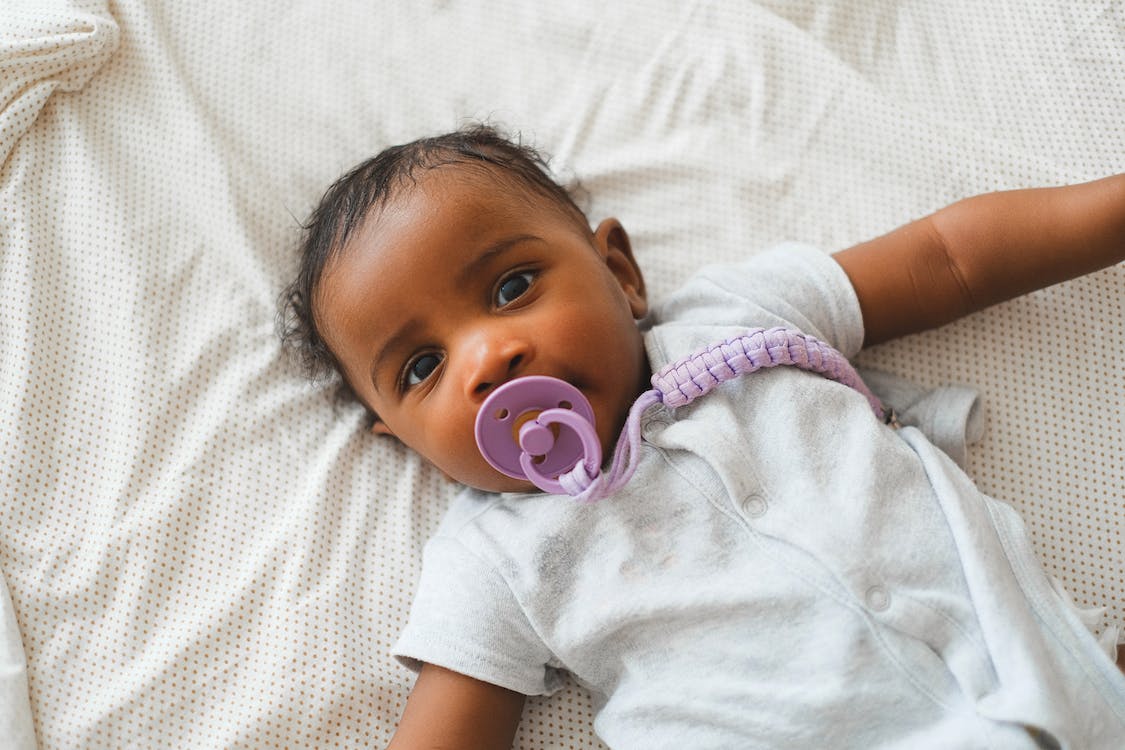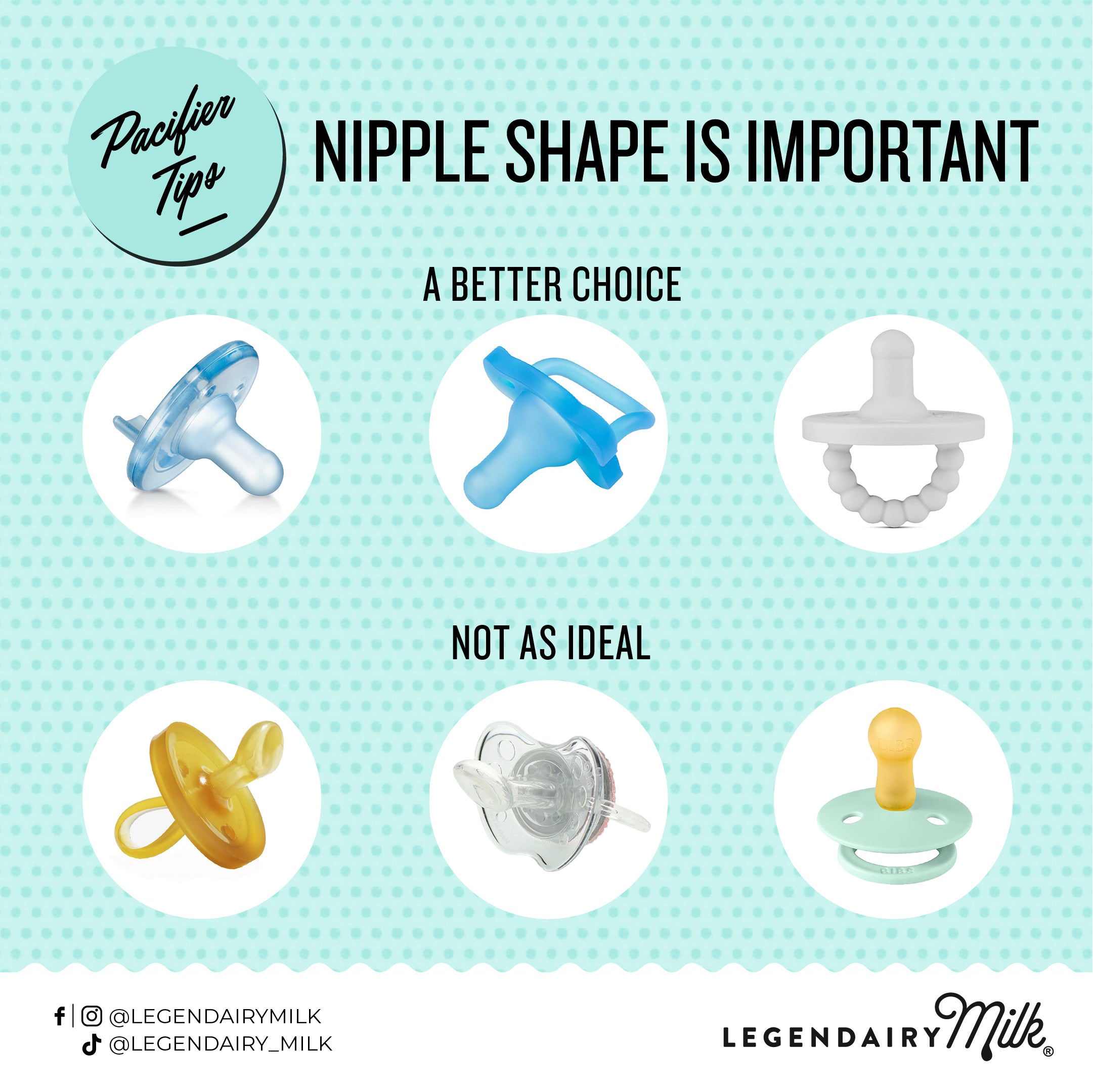I find the Dr. Brown’s pacifier to be uncomfortably long for many newborns, but the Nanobebe is great! Love the conical shaped ones

Pacifiers: Pacifier Use & Ideal Pacifier Shape
|
6 min
|
6 min
Breastfeeding is about so much more than getting calories. Babies suck for more reasons than feeding alone. The rhythmic pattern of sucking calms the baby by regulating their nervous system and can help them drift off to sleep. Pacifiers have a very long history. Many styles of pacifiers and materials have been used to help soothe babies. Parents have different considerations to weigh when deciding if using a pacifier is the right choice for them and what pacifier would best fit their baby.
In ultrasounds taken during pregnancy, you may see your baby mouthing and sucking on their hand. This early thumb sucking happens as early as 10 weeks in utero but is thought to be more random until the sucking reflex begins around 32 weeks during pregnancy. (2) After birth, the rooting reflex, elicited when the cheeks are touched, helps the baby get ready to suck. When the roof of your baby’s mouth is touched by their thumb, your nipple, a bottle nipple, or a pacifier, the suck reflex is triggered, and your baby begins to suck.
Centuries ago, people used natural materials to make objects for their babies to help soothe them. Early pacifiers were a combination of a rattle and a pacifier. Primitive pacifier rattles were made of beads, sticks, coral, bones, shells, pods, or other natural materials. (1) The materials used had textures that would feel good on the baby’s gums during teething and smooth materials that felt good for satisfying their need to suck.
A pacifier can be a helpful tool but is not needed or necessary for every baby. Babies have a high need to suck. They get nutrients from sucking when they feed, but the rhythm of sucking is calming, reduces discomfort, and can aid them in self-regulation when not breastfeeding. Nature's natural design is putting your baby on your breast whenever they want to suck, whether for calories or comfort. A pacifier can never replace being in your arms, against your body, and breastfeeding, but it gives parents an alternative option to soothe their baby's desire to suck while not on the breast.
Breastfeeding is the original, nature-designed pacifier. (6) Remember that your baby breastfeeds to meet a variety of needs and not just take in calories. It is always appropriate to offer to nurse your baby even after you just fed them. Nursing comforts your baby, meets their emotional needs, and regulates their nervous system, breathing, temperature, and heart rate. A pacifier can be a handy tool, not a replacement for them to be at your breast. (7) If you decide to use a pacifier, consider its appropriate use and the shapes and styles available to help you decide which pacifier best fits your baby. There are plenty of situations your baby may still want to fill their need to suck, but breastfeeding isn’t an option, and a pacifier may come in handy.
https://www.aafp.org/afp/2009/0415/p681.html
https://www.breastfeedingbasics.com/qa/baby-uses-human-pacifier
https://www.diannecassidyconsulting.com/2021/05/30/help-my-baby-is-using-me-as-a-pacifier/
https://www.youtube.com/watch?v=ZD7Zh6wwltM
https://bmcpediatr.biomedcentral.com/articles/10.1186/s12887-019-1668-3
Comments
I find the Dr. Brown’s pacifier to be uncomfortably long for many newborns, but the Nanobebe is great! Love the conical shaped ones
Thank you!! Thank you!! thank you!!
How can I access this article for other Moms??
———
Legendairy Milk replied:
Hi! You can link directly to the blog post! https://www.legendairymilk.com/blogs/news/pacifiers-pacifier-use-ideal-pacifier-shape
